Approaches to Creating Colorful 3D-Printed Parts and Reliefs †
Abstract
1. Introduction
2. Materials and Methods
2.1. Pausing at a Specific Layer Height with a Single-Nozzle Printer
2.2. Using a Printer with Two or More Nozzles
2.3. Using Multi-Material Units
2.4. Creating a Color Printing Model with HueForge
3. Results and Discussion
Author Contributions
Funding
Institutional Review Board Statement
Informed Consent Statement
Data Availability Statement
Acknowledgments
Conflicts of Interest
Abbreviations
| FDM | Fused Deposition Modeling. |
| FFF | Fused Filament Fabrication. |
| SLA | Stereolithography. |
| DLP | Digital Light Processing. |
| LCD | Liquid-Crystal Display. |
References
- Tsolakis, I.A.; Gizani, S.; Panayi, N.; Antonopoulos, G.; Tsolakis, A.I. Three-Dimensional Printing Technology in Orthodontics for Dental Models: A Systematic Review. Children 2022, 9, 1106. [Google Scholar] [CrossRef] [PubMed]
- Mahmood, A.; Akram, T.; Chen, H.; Chen, S. On the Evolution of Additive Manufacturing (3D/4D Printing) Technologies: Materials, Applications, and Challenges. Polymers 2022, 14, 4698. [Google Scholar] [CrossRef] [PubMed]
- Thi Hai, V.N.; Phu, S.N.; Essomba, T.; Lai, J.-Y. Development of a Multicolor 3D Printer Using a Novel Filament Shifting Mechanism. Inventions 2022, 7, 34. [Google Scholar] [CrossRef]
- El Messaoudi, D.; Elyessefi, A.; Buj-Corral, I.; ElMesbahi, J.; El Mrabet, M.; Boulaala, M.; Elmesbahi, A. Design of a Full-Colors FDM 3D Printer: Key Technical Possibilities. Int. J. Interact. Des. Manuf. 2024, 18, 569–589. [Google Scholar] [CrossRef]
- Badar, F.; Dean, L.T.; Loy, J.; Redmond, M.; Vandi, L.-J.; Novak, J.I. Preliminary Color Characterization of HP Multi Jet Fusion Additive Manufacturing with Different Orientations and Surface Finish. Rapid Prototyp. J. 2023, 29, 582–593. [Google Scholar] [CrossRef]
- Cader, M.; Kiński, W. Effect of Changing the Parameters of the Multi Jet Fusion (MJF) Process on the Spatial Objects Produced. Probl. Mechatron. Armament Aviat. Saf. Eng. 2020, 11, 61–72. [Google Scholar] [CrossRef]
- Petsiuk, A.; Bloch, B.; Debora, M.; Pearce, J.M. Tool Change Reduction for Multicolor Fused Filament Fabrication through Interlayer Tool Clustering Implemented in PrusaSlicer. Rapid Prototyp. J. 2024, 30, 1592–1609. [Google Scholar] [CrossRef]
- Xia, L.; Yan, R. A Fast Slicing Method for Colored Models Based on Colored Triangular Prism and OpenGL. Micromachines 2025, 16, 199. [Google Scholar] [CrossRef] [PubMed]
- Kshirsagar, R.M.; Kherde, S.M.; Dharmadhikari, S.R. Investigation of 3D Printed Lithophane Quality Improvement on an FDM Printer. In Proceedings of the 2nd International Conference on Self Sustainable Artificial Intelligence Systems (ICSSAS), Erode, India, 23–25 October 2024; pp. 1488–1494. [Google Scholar] [CrossRef]
- Chalupa, V.; Stanek, M.; Vanek, J.; Strnad, J.; Ovsik, M. Design of Dual-Head 3D Printer. Manuf. Technol. 2023, 23, 177–185. [Google Scholar] [CrossRef]
- Best Multi/Dual Extruder & Multicolor 3D Printers. Available online: https://all3dp.com/1/best-dual-extruder-3d-printer (accessed on 1 April 2025).
- HueForge. What Is HueForge? Available online: https://shop.thehueforge.com/blogs/news/what-is-hueforge (accessed on 1 April 2025).
- The TD-1 by AJAX-3D. Available online: https://ajax-3d.com/introducing-the-future-of-filament-td-testing/ (accessed on 1 April 2025).
- Transmission Distance Test Square for Hue Forge. Available online: https://www.printables.com/model/517875-transmission-distance-test-square-for-hue-forge (accessed on 1 April 2025).
- Diakov, D.; Nikolova, H.; Komarski, D.; Dimitrova, D. Systems for Measuring Deviations of Shape, Orientation and Position. In Proceedings of the 2024 XXXIV International Scientific Symposium Metrology and Metrology Assurance (MMA), Sozopol, Bulgaria, 7–11 September 2024; pp. 1–6. [Google Scholar] [CrossRef]
- Todorov, T.; Bineva, K.; Romanov, B. Validation of Design and Ergonomics of a Protective Mask by Creating a Silicone Replication in a 3D Printed Mold Tool. Mech. Mach. Sci. 2025, 174, 335–344. [Google Scholar] [CrossRef]

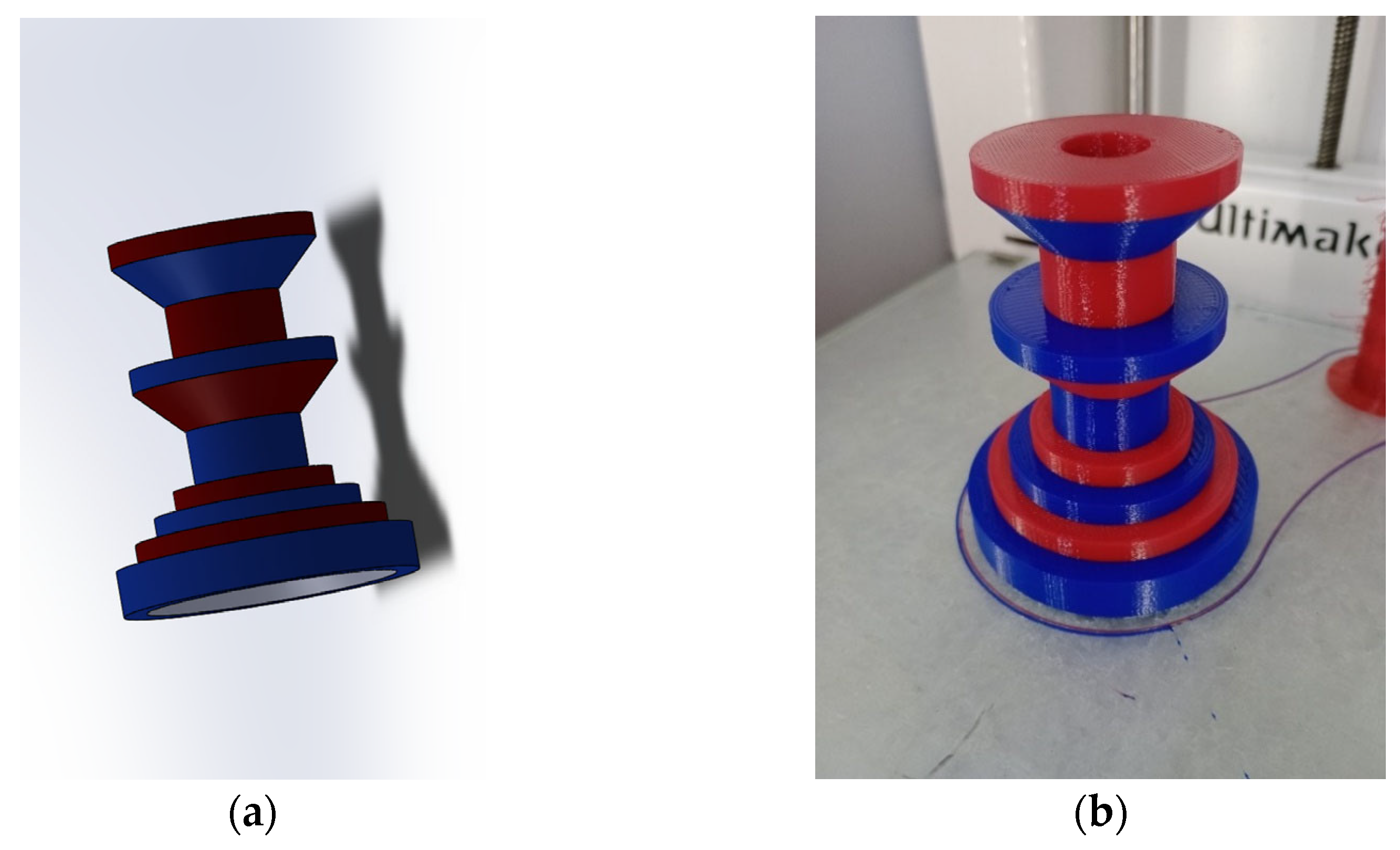
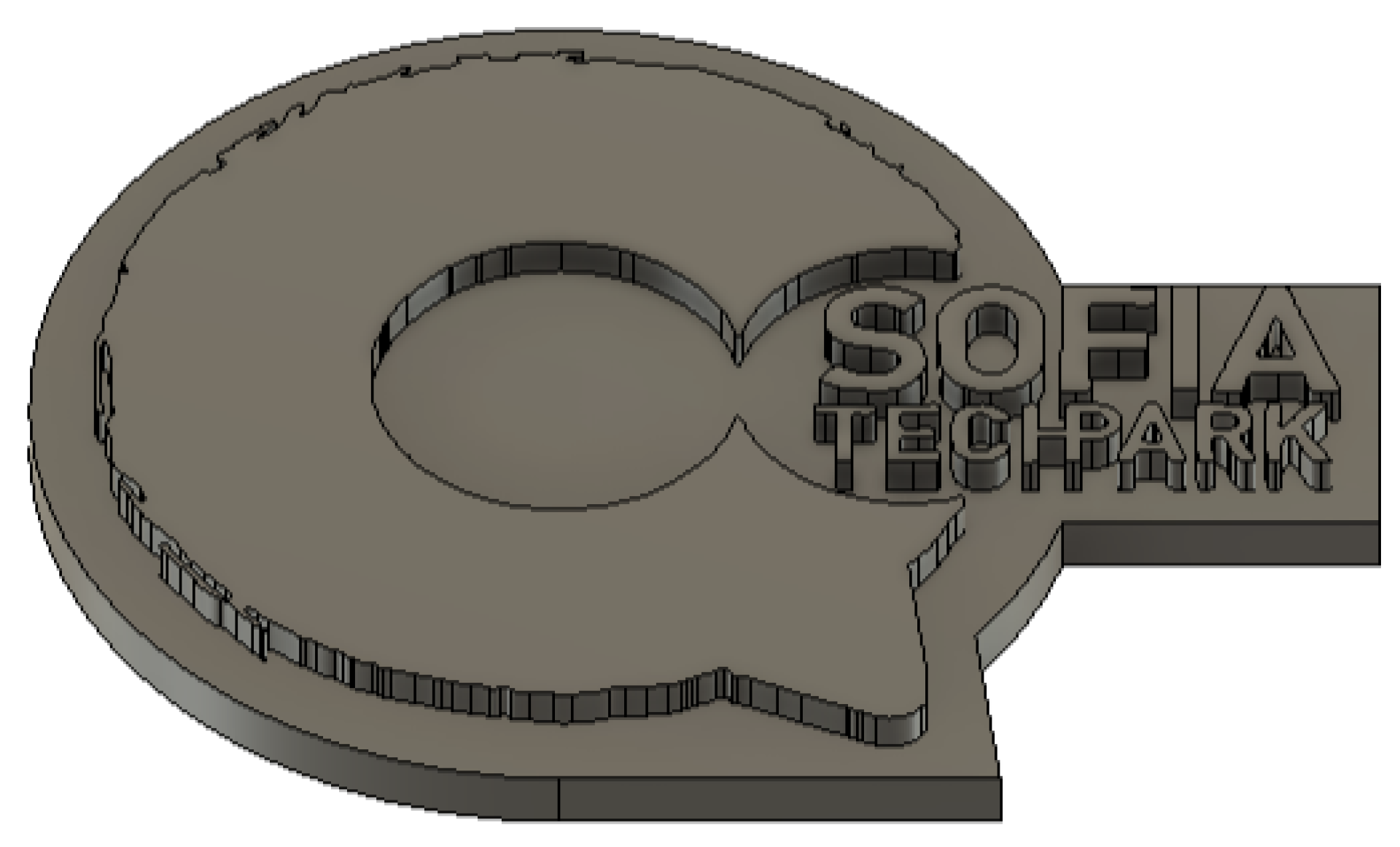




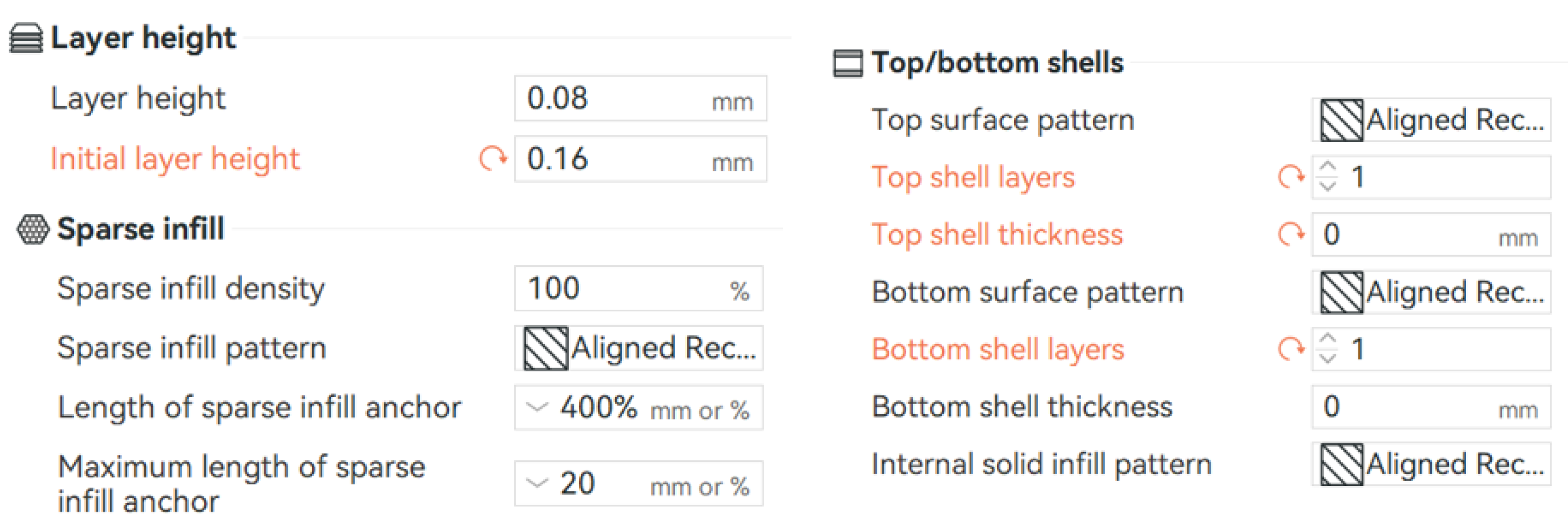
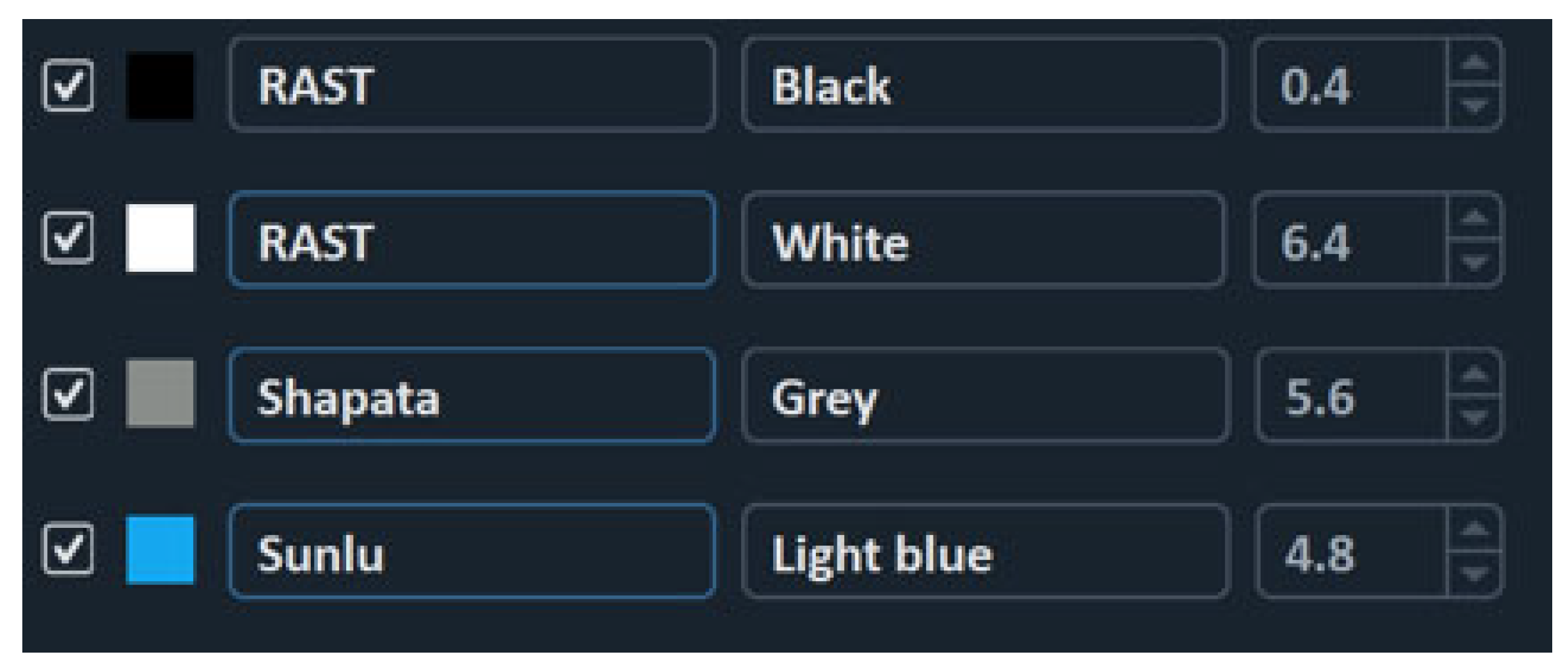

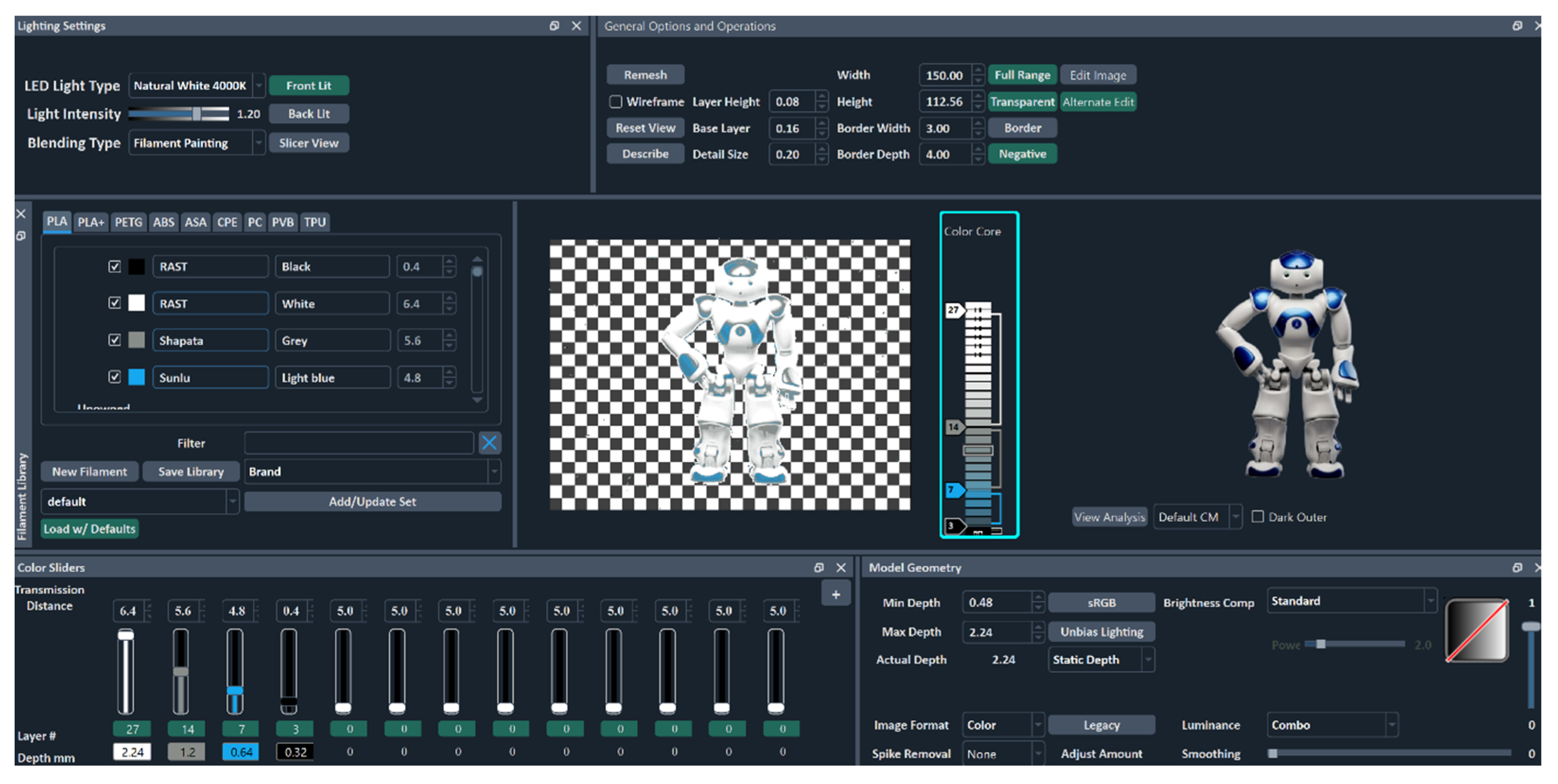
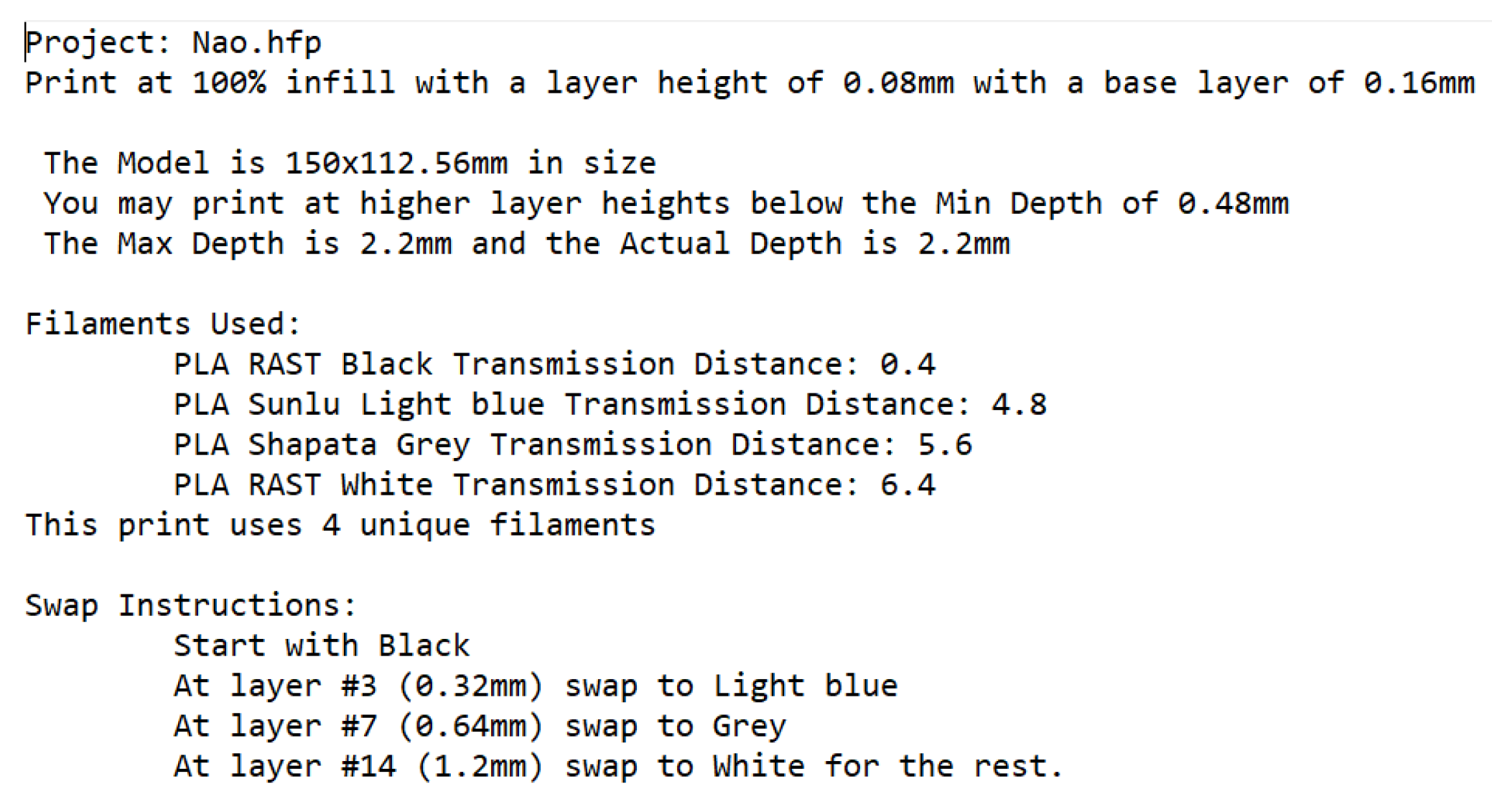
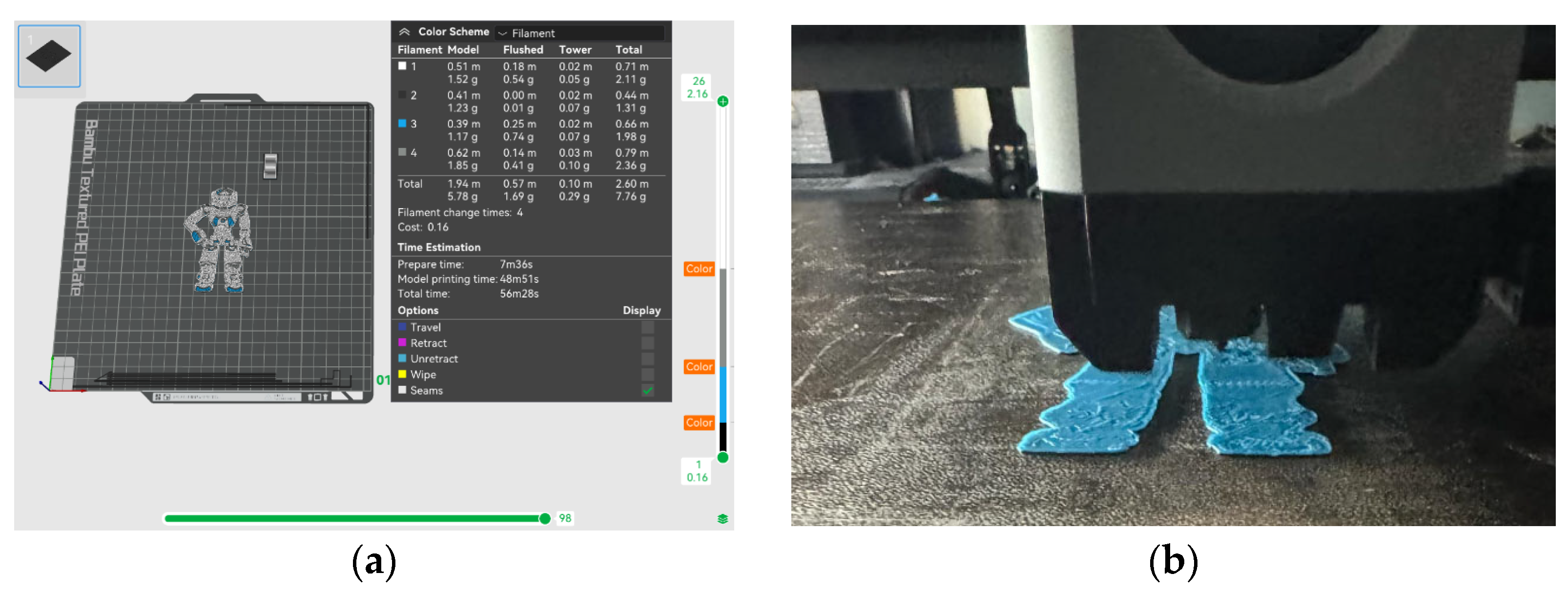

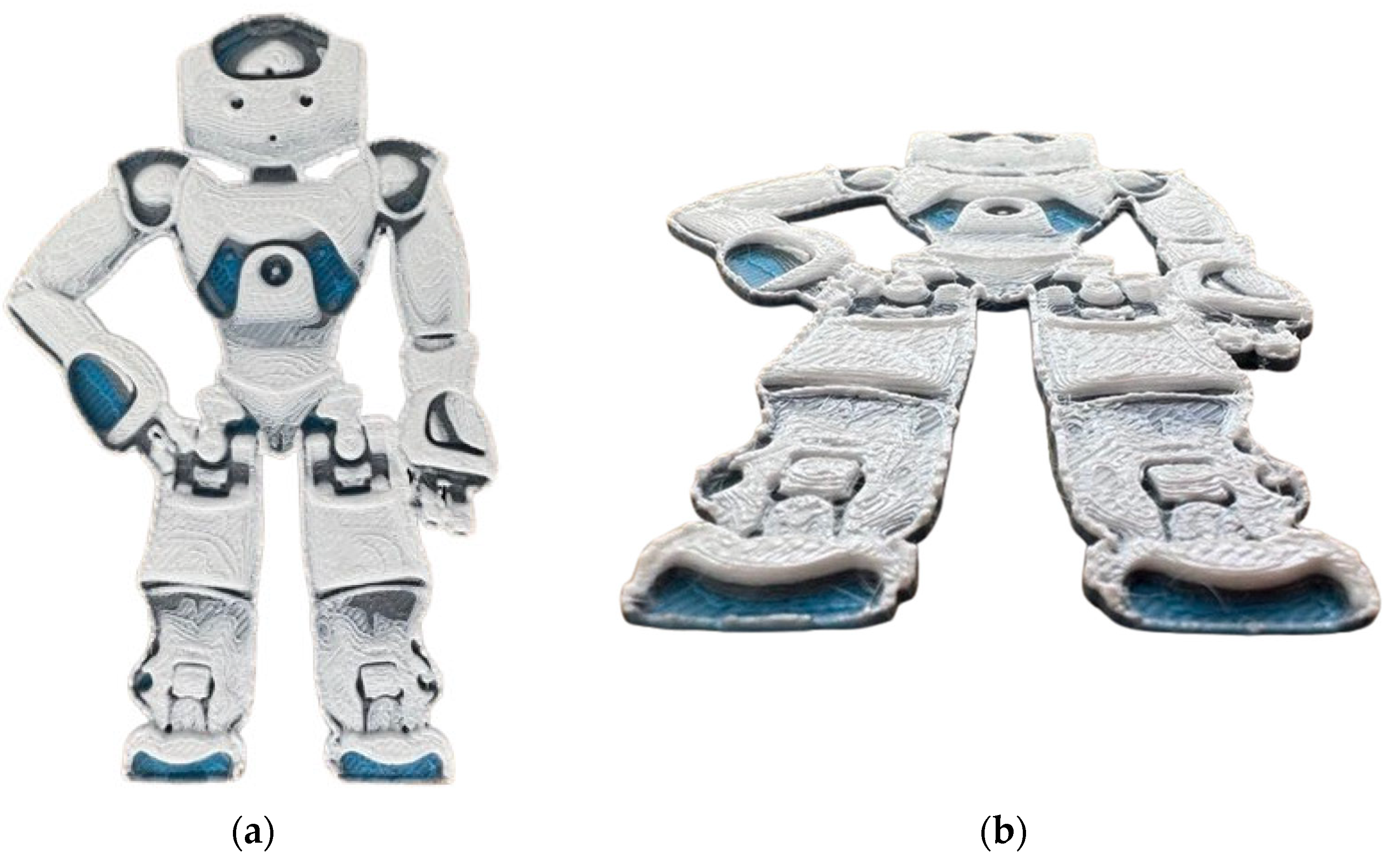
Disclaimer/Publisher’s Note: The statements, opinions and data contained in all publications are solely those of the individual author(s) and contributor(s) and not of MDPI and/or the editor(s). MDPI and/or the editor(s) disclaim responsibility for any injury to people or property resulting from any ideas, methods, instructions or products referred to in the content. |
© 2025 by the authors. Licensee MDPI, Basel, Switzerland. This article is an open access article distributed under the terms and conditions of the Creative Commons Attribution (CC BY) license (https://creativecommons.org/licenses/by/4.0/).
Share and Cite
Zagorski, M.; Miltchev, R.; Dochev, B.; Stoimenov, N. Approaches to Creating Colorful 3D-Printed Parts and Reliefs. Eng. Proc. 2025, 100, 9. https://doi.org/10.3390/engproc2025100009
Zagorski M, Miltchev R, Dochev B, Stoimenov N. Approaches to Creating Colorful 3D-Printed Parts and Reliefs. Engineering Proceedings. 2025; 100(1):9. https://doi.org/10.3390/engproc2025100009
Chicago/Turabian StyleZagorski, Mihail, Radoslav Miltchev, Boyan Dochev, and Nikolay Stoimenov. 2025. "Approaches to Creating Colorful 3D-Printed Parts and Reliefs" Engineering Proceedings 100, no. 1: 9. https://doi.org/10.3390/engproc2025100009
APA StyleZagorski, M., Miltchev, R., Dochev, B., & Stoimenov, N. (2025). Approaches to Creating Colorful 3D-Printed Parts and Reliefs. Engineering Proceedings, 100(1), 9. https://doi.org/10.3390/engproc2025100009






